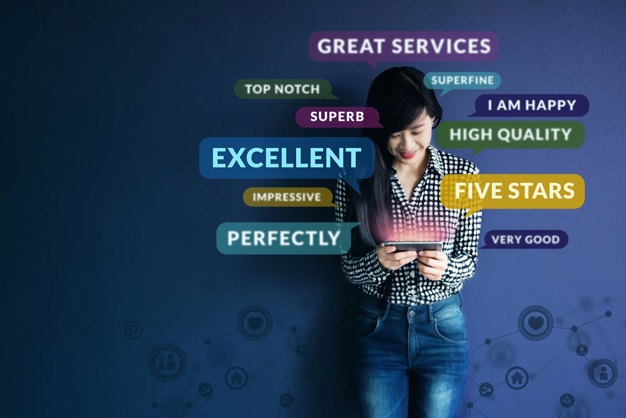
5 Ways You Can Use Social Media to Build Relationships and Increase Audience Engagement
Need help with social? Learn five way to use social media to build relationships with your consumers and increase audience engagement. …


Influencer marketing isn’t dead, it’s just changing.
A few years ago, many industries cut back on influencer marketing due to COVID-19 and the economy. These days, this particular marketing tool is back. Influencer Marketing Hub surveyed 3,000 people who ranged from marketing experts to brand representatives to discover the following notable influencer marketing statistics.
While influencer marketing has bounced back, it’s not quite the same as it was in the past. There are a few new twists that have made influencer marketing an increasingly intriguing option for small- and mid-sized businesses. Let’s break down some of the major trends that have made influencer marketing an important tool for many brands.
The increased use of AI is a major trend for social media and digital marketing in general, and that includes influencer marketing.
Influencer Marketing Hub’s survey found that 63% of people planned to use AI for influencer marketing, and another 27.1% were considering leveraging AI in the future. Businesses can utilize tools like CreatorIQ and EngageAI to help complete important tasks, such as the following.
Those are some very important, time-consuming tasks that are now a lot easier to complete, which has made influencer marketing all that much more attractive for teams with a lot to do and only so much time available.
Most businesses don’t have the budget to spend hundreds of thousands of dollars on influencer marketing – and you don’t have to.
According to Influencer Marketing Hub, nearly half of brands spend less than $10,000 on influencer marketing in a year, whether they’re trying out influencer marketing for the first time or have found success with smaller budgets than your Coca-Colas and Calvin Kleins of the world. That approach led to more businesses partnering with smaller, but still very effective, influencers.
The reason for this trend is simple – influencers with smaller audiences still deliver results and don’t cost as much as more notable names. In addition, there are more nano and micro influencers than those with massive followings, and many of these accounts are focused on more specific audiences that may better suit your brand. Those qualities make these smaller influencers a much better value for small- and mid-sized businesses.
One of the biggest questions that marketers have when it comes to influencer marketing is where to start. The answer, of course, is “it depends” – but there are plenty of legitimate options. Here are the most-used platforms according to Influencer Marketing Hub.
These may be the most popular platforms for influencer marketing, but they’re not alone. Savvy brands have found opportunities with other platforms as well. For example, influencer marketing is becoming increasingly popular on SnapChat, and new platforms can and will become potential opportunities.
There are plenty of less popular and more niche social media platforms out there, and more businesses are finding them. TikTok and Instagram are commonly used platforms for a reason – TikTok even has a dedicated Creativity Program and in-app Shop to leverage the power of influencer marketing. Still, it’s worth exploring other options to diversify your reach and try to find a perfect fit for your specific audience.
It’s easy to think of influencer marketing and envision the classic sponsored content posts. Those types of content still work, but they’re not the only ways to leverage influencers for your brand.
More businesses are utilizing influencer marketing in new, exciting ways. Whether you want to drive leads, grow brand awareness, or achieve some other goal, brands are trying different strategies to accomplish their goals. Here are some of the tactics that marketers and using for their businesses:
In addition, more brands are tying these tactics into other digital marketing strategies. Influencer marketing isn’t just a content tool.
Brands now use influencer-generated content for SEO by creating blog posts around video snippets or having influencers link to your content to create backlinks. More businesses also use influencer content in paid ads. This ability to repurpose content has made influencer marketing even more attractive in recent years
These days, more people are going to connect more with a smaller, more relatable influencer than a massive celebrity. It’s more than just a nice sentiment – the stats back up the shift toward authenticity. For example, nano influencers on Instagram have an engagement rate more than double that of larger accounts and smaller influencers generally enjoy better engagement numbers from smaller influencers on other platforms as well
Simply put, people typically like the personalities they follow online. A lot of your potential audience want to see content that is more genuine and doesn’t feel scripted. Businesses have learned that having a smaller influencer with a dedicated audience promote their brand in the same style as their own content is appealing to their audience. That trend has meant that more businesses have ditched the scripts and worked with creators to let them, well, be creative.
B2C businesses aren't the only ones that can benefit from influencers. The use of influencer marketing has risen in recent years, with big organizations finding notable success with these strategies. Ogiilvy interviewed more than 550 senior B2B decision makers across the globe and found that:
While those surveyed came from larger organizations, you don't need to be a Fortune 500 company to reap the benefits. Influencer marketing can do an excellent job building trust and making your tools or services feel less like a sales pitch – all it takes is some creativity and a commitment to building relationships.
Like most digital marketing tactics, influencer marketing can be a great tool for businesses of all sizes depending on your needs. The rise of smaller influencers, AI, and other trends has made influencer marketing increasingly attractive for brands regardless of how big their marketing team is – now it’s just time to see how and if it fits into your future plans.
Need some help leveraging influencer marketing and other social media strategies for your brand? We can help. Reach out to Aztek today to learn how we can support your business’ digital marketing efforts.
